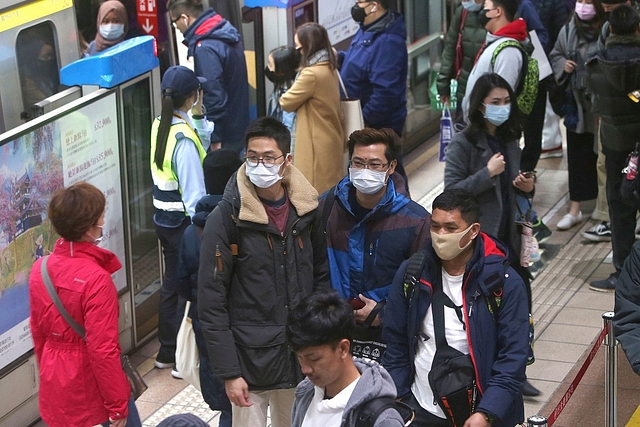
The Economic Disruption Brought About By Covid-19 Cannot Be Tackled By Central Banks Alone
An appropriate and coordinated response from central bankers is an encouraging sign.
Governments must also recognise their policy choices and exercise them in a coordinated manner to overcome this crisis.
There is no doubt that we are witnessing an unprecedented health crisis that has disrupted the global economy. What looked like a normal growth year has now got world’s major central bankers sit up and take note with concern.
One of the reasons why central bankers must be up all night is because of the realisation of their limitations in terms of averting the crisis even as the world believes them to be capable of pulling a new rabbit out of their hat.
As with any economic situation, the first step is to correctly identify the factors that have contributed to the situation before one begins to offer any policy prescriptions. The diagnosis at the moment is as clear as it could be, and it is indeed a supply shock with the world’s biggest factory (read as China) being virtually shut for weeks.
The supply disruption is well regarded, however, with stabilising coronavirus (Covid-19) cases in China and other East Asian economies, we can expect the supply chains to gradually pick up over the coming months.
This implies that some shortages and an increase in prices of items that have witnessed a disruption of supply are inevitable. Some of this is visible in certain areas of advanced economies that are finding their inventories running at an all time low even as production of goods is yet to resume.
The supply shock reminds one of the oil shocks during the 1970s which coincided with slowing growth and increase in inflation due to higher fuel prices in most advanced economies.
An equally important aspect of the Covid-19 shock is its impact on demand, which is already visible in low commodity prices.
When people are scared to assemble in large numbers due to fears of an epidemic, it is going to be a major problem, and not just for sectors such as tourism or hospitality industry.
Some of these effects are already playing out and the travel advisories issued by respective governments to contain the disease are having an impact too.
There are risks of worsening consumer confidence, which is precisely why there are reasons for policymakers to act swiftly and boldly.
With South Africa already in recession and a possibility of a negative growth quarter for China along with nearly stagnant growth in other emerging economies, clearly the global picture looks far different than three months ago.
It is precisely this reason why central bankers have scrambled to take charge and do whatever is feasible to contain its impact on their respective economies.
This action appears to be coordinated as the cut announced by Australia’s central bank was followed by a 50 basis points cut by the US Federal Reserve, and even the Bank of Canada has slashed rates.
The Reserve Bank of India too has issued a press release in which it talks about the need for coordinated action and that it is prepared to act if and when needed.
There are two issues that are often highlighted about the action taken by central bankers – first is that it won’t be enough as it doesn’t address the core issue.
Second is regarding the limited space available for such rate cuts.
Indeed, the latter part is true for many central banks as long as we assume that the nominal rates won’t fall to negative levels.
But even then, it is a good question to ask just how low interest rates can go in order to support growth – or is it time to think beyond interest rates as an instrument for monetary policy in times of crisis?
The first issue of rate cuts not being enough is indeed true and monetary policy alone won’t resolve the issue. While a coordinated simultaneous fiscal and monetary intervention is needed, we should consider such an intervention to have an objective of avoiding a full-blown crisis.
That is, such an intervention is needed to ensure systemic stability of our financial system. A positive side-effect of such an intervention could also be the revival of demand in some sectors and thus, it could prevent growth to fall beyond a point.
The present crisis has two scenarios; first is if it stabilises and disappears by summer which could result in a partial recovery of economic activity. Under such a situation, firms may want to hedge their supply chains and thus countries like India may benefit.
The second is more alarming which is of a prolonged impact of Covid-19 well into the summer. This is going to be problematic, especially with the build-up of debt on the balance sheet of several companies.
There needs to be a contingency plan for appropriate coordinated action in such a scenario to maintain global financial stability.
The fact that there is an appropriate and coordinated response from central bankers is an encouraging sign that suggests a set of monetary masters that are prepared to act in order to avert the crisis.
The question is will they be enough? We’re afraid, not. But then, what more can they do anyway? Therefore, governments must recognise their policy choices and exercise them in a coordinated manner sooner rather than later.